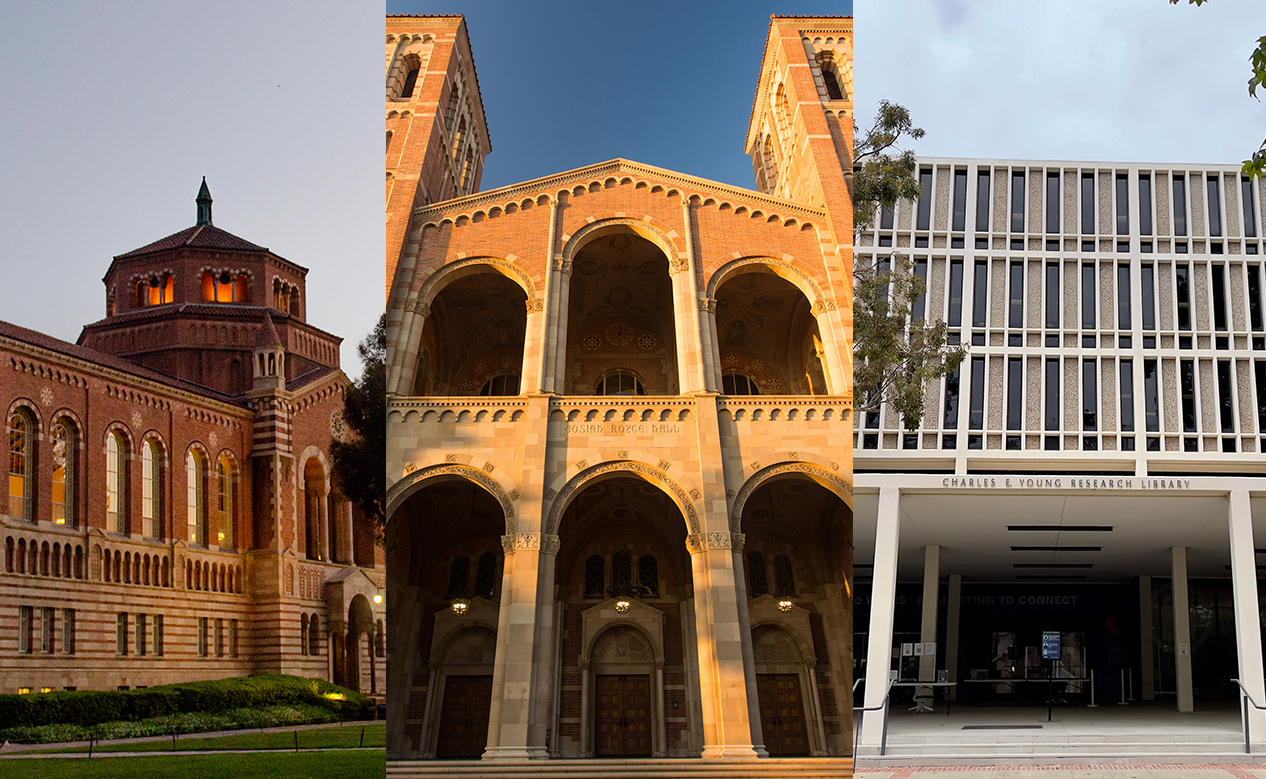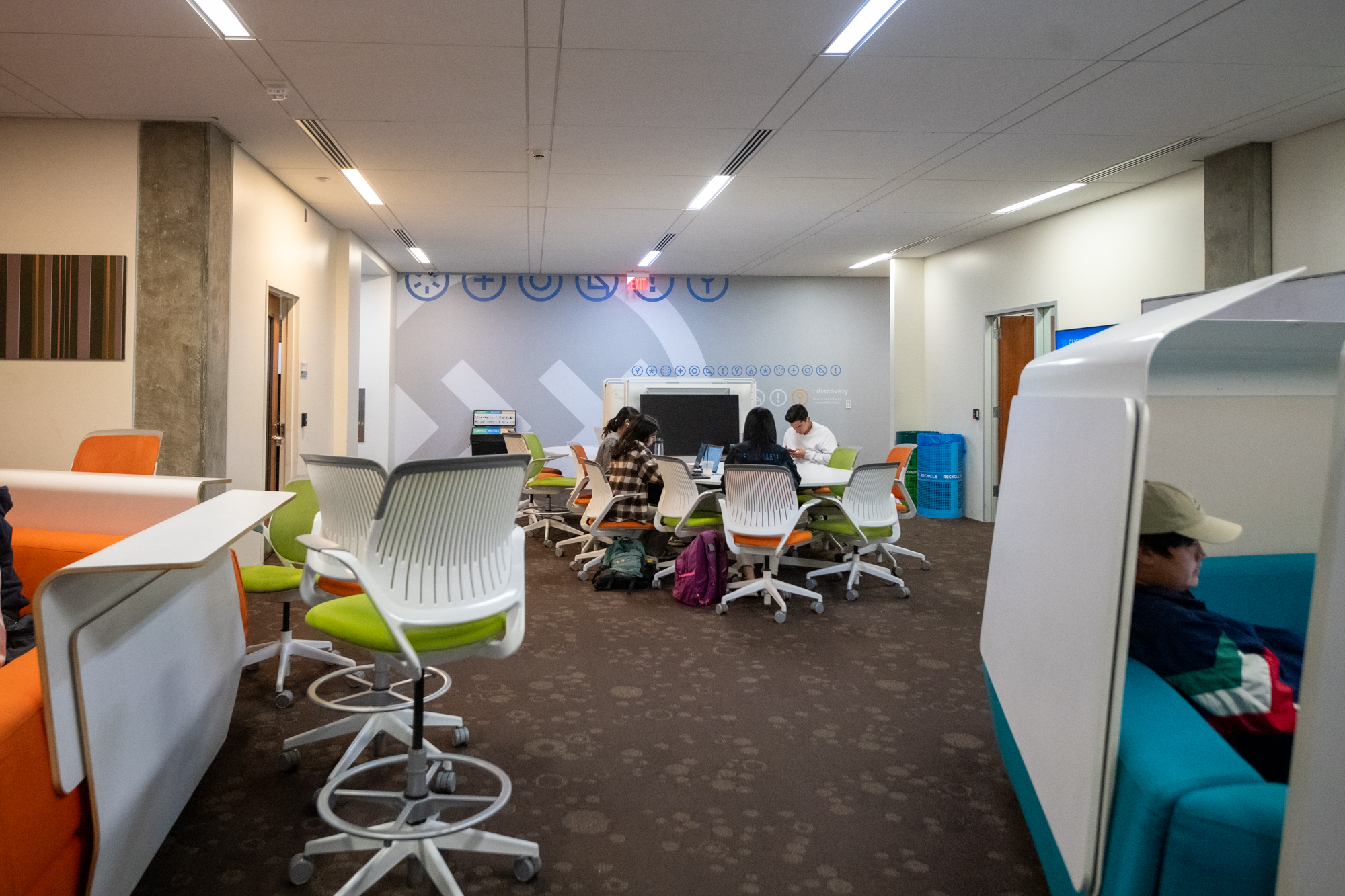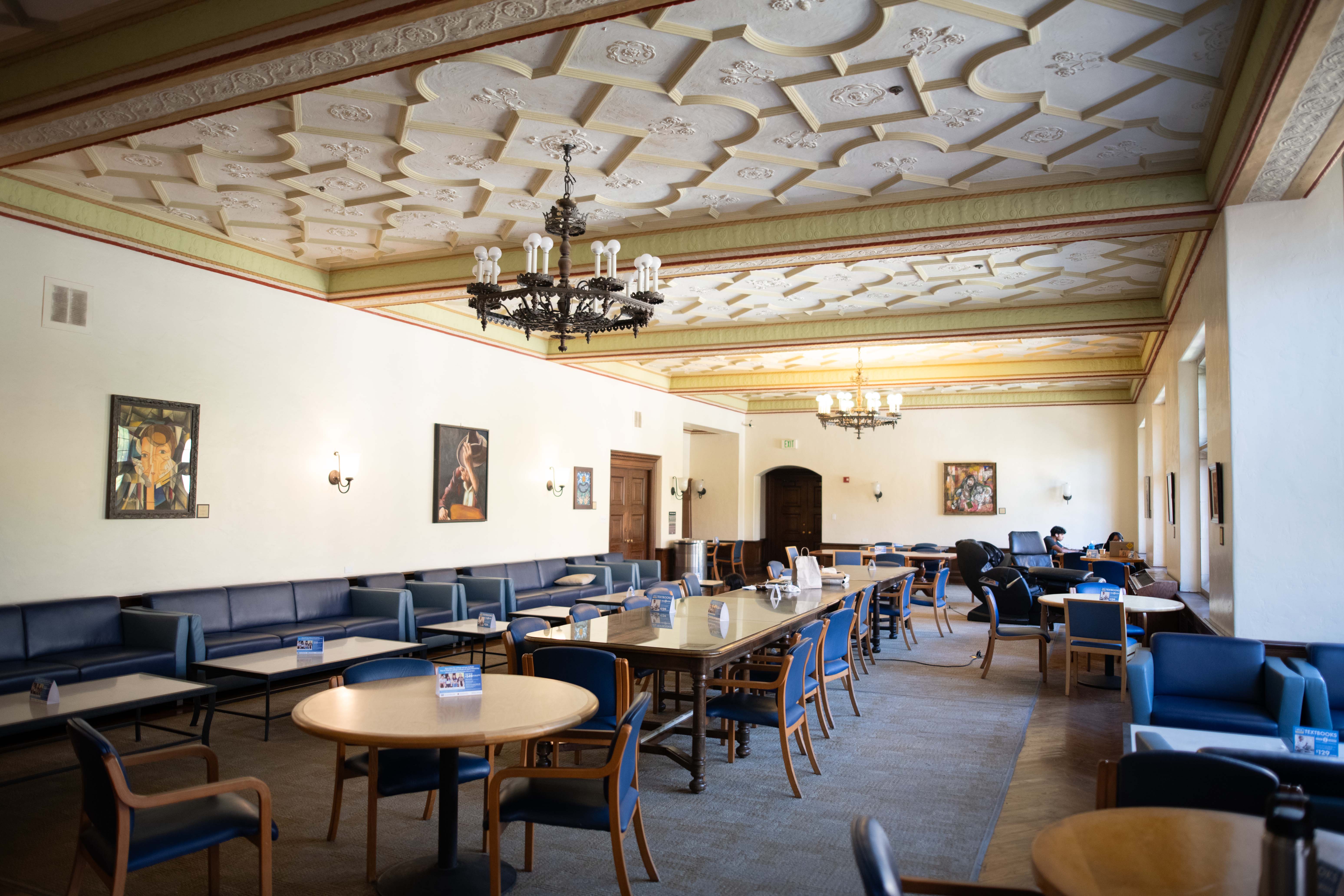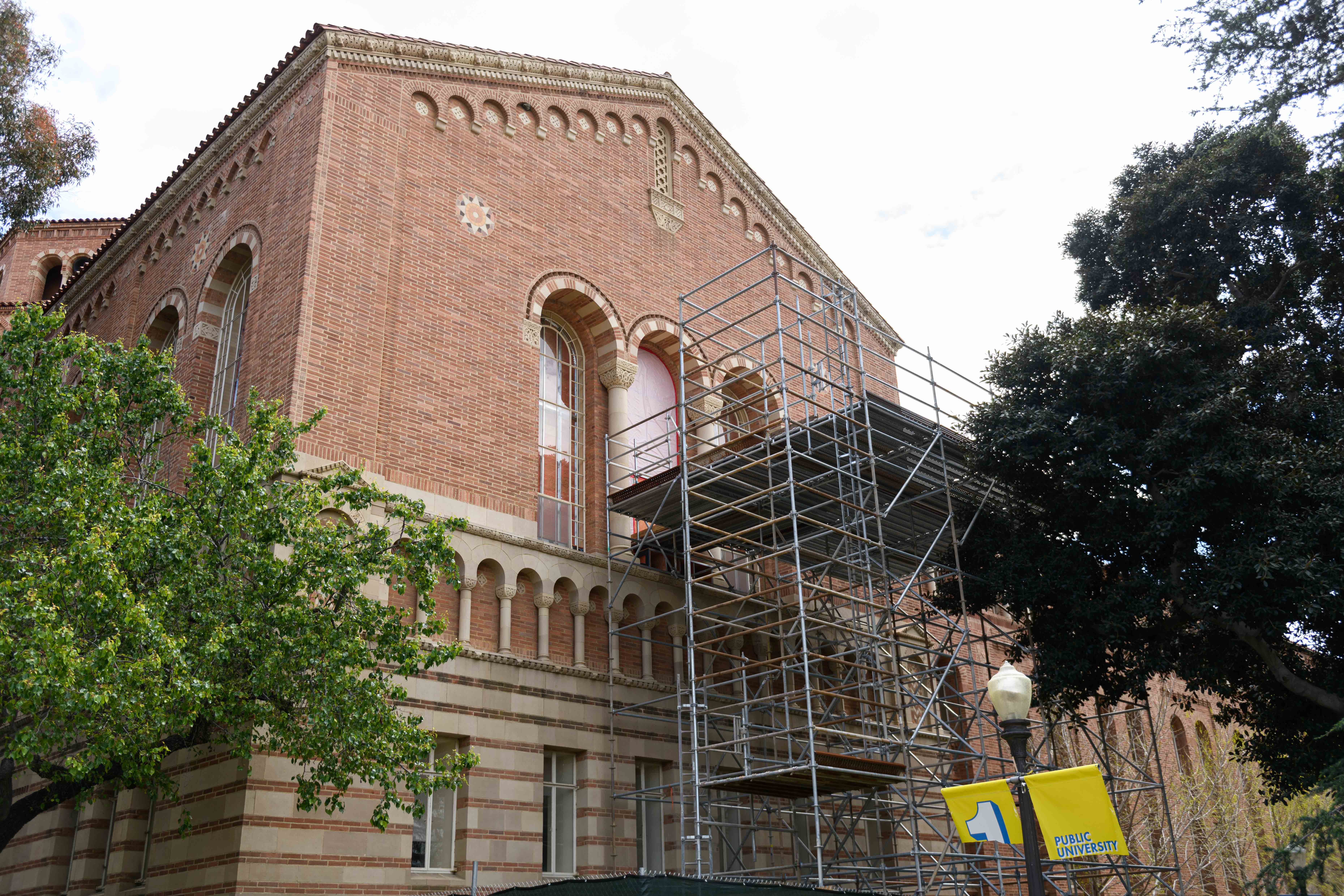Opinion: UCLA’s best study spot isn’t 1 spot at all. It’s whatever best suits each student.

Powell Library, Royce Hall and Charles E. Young Research Library are pictured. UCLA has an abundance of diverse study spots to choose from that all range in ambience, atmosphere and environment to align with the ways in which different students learn best. (Daily Bruin file photos)
By Sierra Benayon-Abraham
May 20, 2025 4:26 p.m.
This post was updated May 20 at 7:32 p.m.
Perhaps one of the best-kept secrets at UCLA is what students consider to be the best study spot.
Which campus study spot, one might ask, has both optimal access to a favorite coffee shop and comfortable chairs in case a last-minute power nap is necessary? Is it more important that the space is indoors, isolated and quiet – or collaborative, with white noise and good lighting?
These are all common questions students ask themselves, especially during high-intensity academic periods such as midterm season and finals week.
However, what if we have been approaching this closely guarded knowledge all wrong?
What if, instead of using our knowledge of what typically coincides with productive studying, we look inward and recognize the unique ways that we all learn best?
UCLA has 12 affiliated libraries on campus that range in atmosphere depending on both the location and the preferences of the student.
Whether a student prefers the collaborative buzz of the Charles E. Young Research Library, where booths and whiteboards lend themselves to group work, or seeks a silent room to learn alone at Powell Library, Bruins are fortunate to have an abundance of study spaces to choose from.
Having a dedicated study space with minimal noise and distractions is preferred by many. Yet some students who prefer listening to podcasts or music attest that this increases their level of productivity and helps them retain information better.
If noise is less relevant to one’s study preferences, perhaps one instead relies on large blank whiteboards to write everything down. In that case, the Louise M. Darling Biomedical Library will most likely be the ideal target, as is the case for second-year physiological science student Alana Cho.
The Biomedical Library has a lot of whiteboards, and Cho said she learns best by drawing diagrams out.
On the other hand, third-year political science student Miles Mattina said he prioritizes the ambience of the study location to motivate and inspire him.
“I think my favorite study spot is actually the top floor of Powell,” Mattina said. “I feel like I’m in a castle. It’s kind of hard to beat that.”
Mattina has a point – the Hogwarts-style architecture of Powell Library always resonated with me, too.
But having three years of experience on campus now, and going through several rounds of midterms and finals, my answer to this heavily pondered question is somewhat different.
I associate different study locations with specific classes or subjects. This trick helps me shift cognitive gears more smoothly, where each environment helps me focus on the project, essay or exam in the subject I paired with the place.
For example, I finish papers most efficiently at Powell Library. But in fall quarter, mathematical formulas stuck with me when I reviewed them in the Boelter Hall stacks.
Unbeknownst to me was the science that backs a similar technique.
According to Robert A. Bjork, a distinguished research professor emeritus in the Department of Psychology, studying in multiple locations can be ideal.
“Students often think that they should find one good place to study and then do all their studying in that place,” Bjork said in an emailed statement. “That might lead to some good habits and scheduling, but it is not optimal in terms of recalling what one has studied. Studying something in more than one environment enhances one’s recall of that information, especially when recall is tested in a new environment such as a classroom.”
While I had previously associated levels of productivity for different subjects with specific locations on campus, I am excited to try this technique of studying the same concepts in multiple different environments.
Evidently, every student is going to have their own preferences, which are likely to change over the course of their academic careers.
But luckily for us, there is no shortage of locations to visit, distinguished faculty to consult and study habits to experiment with.
Let’s look introspectively and reflect on how we individually work best so we can maximize collaborative success, spark thought-provoking discussion and fuel curiosity.
Continue to embrace these preferences. I don’t know about you, but given that my favorite study spot typically switches each quarter, my goal is to visit all 12 libraries before I graduate.
And I hope you’ll choose to join me.





